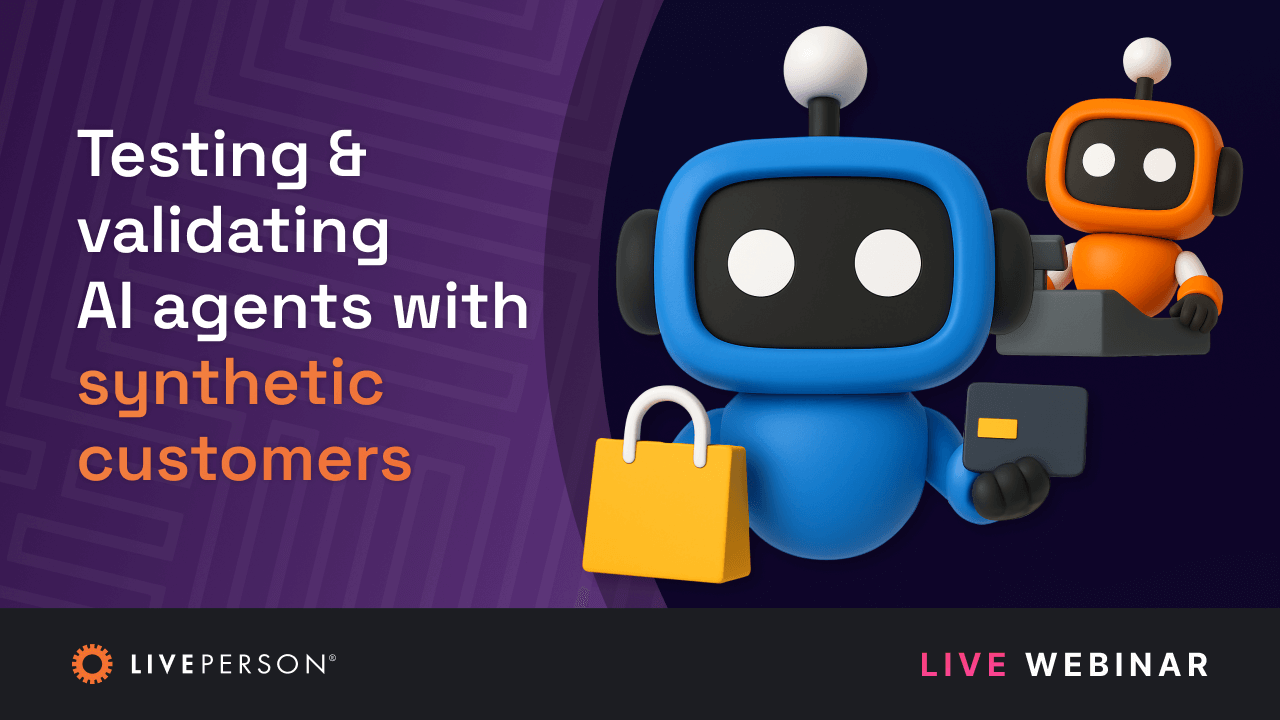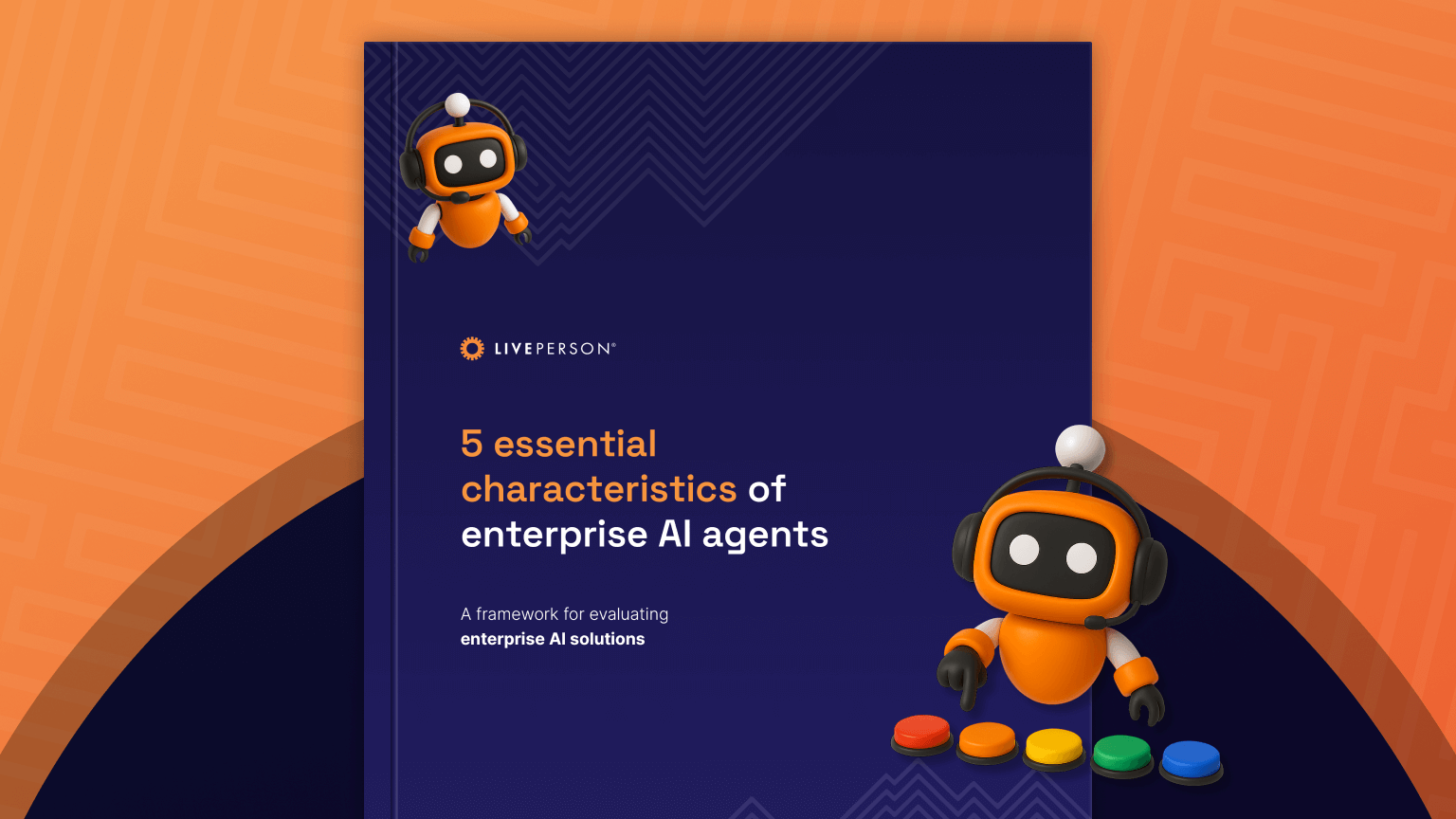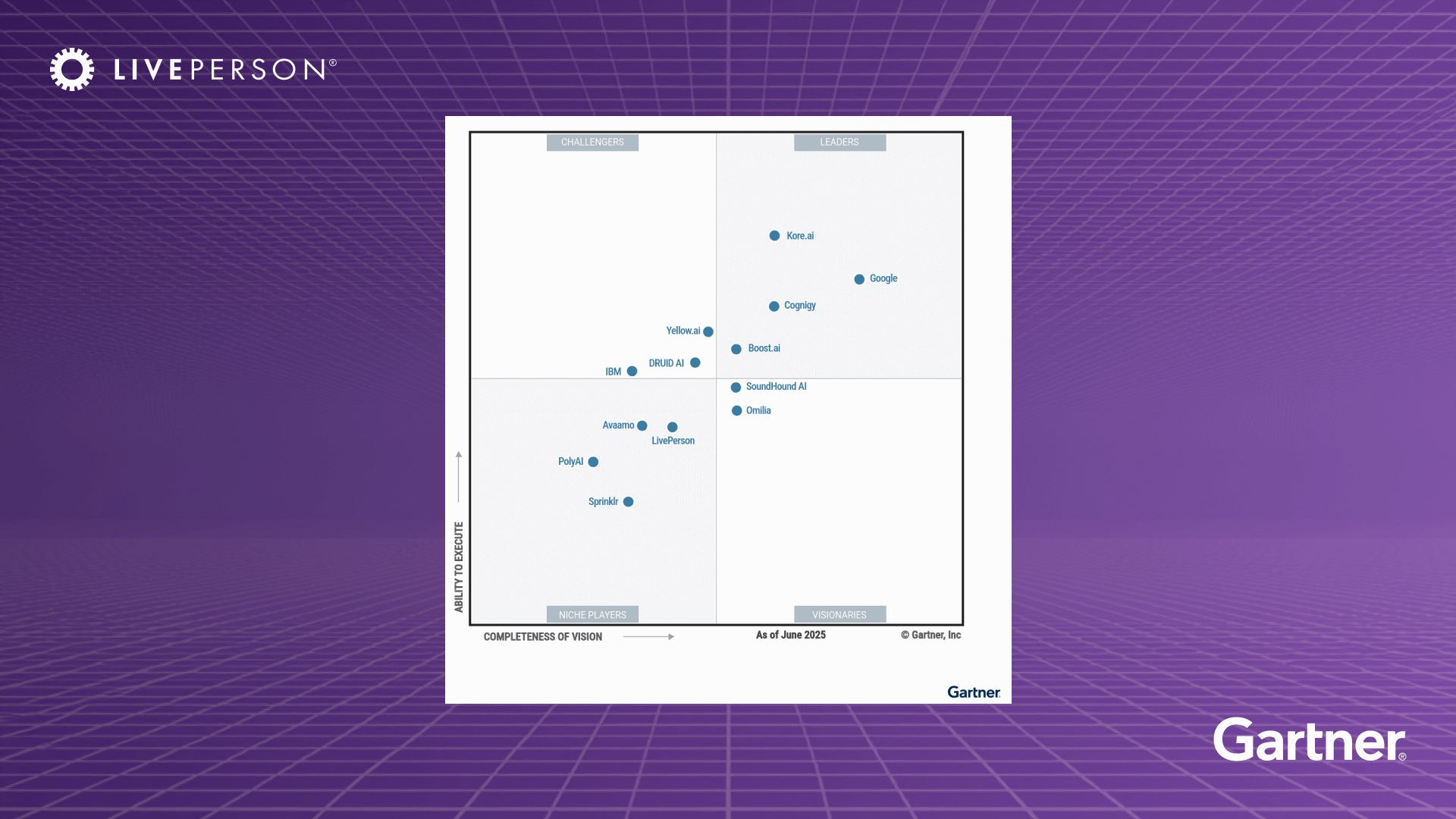article
What is Conversational AI: How it started and where it’s going
We explore the past, present, and future of conversing with artificial intelligence for a more convenient life
April 08, 2022 • 5 minutes
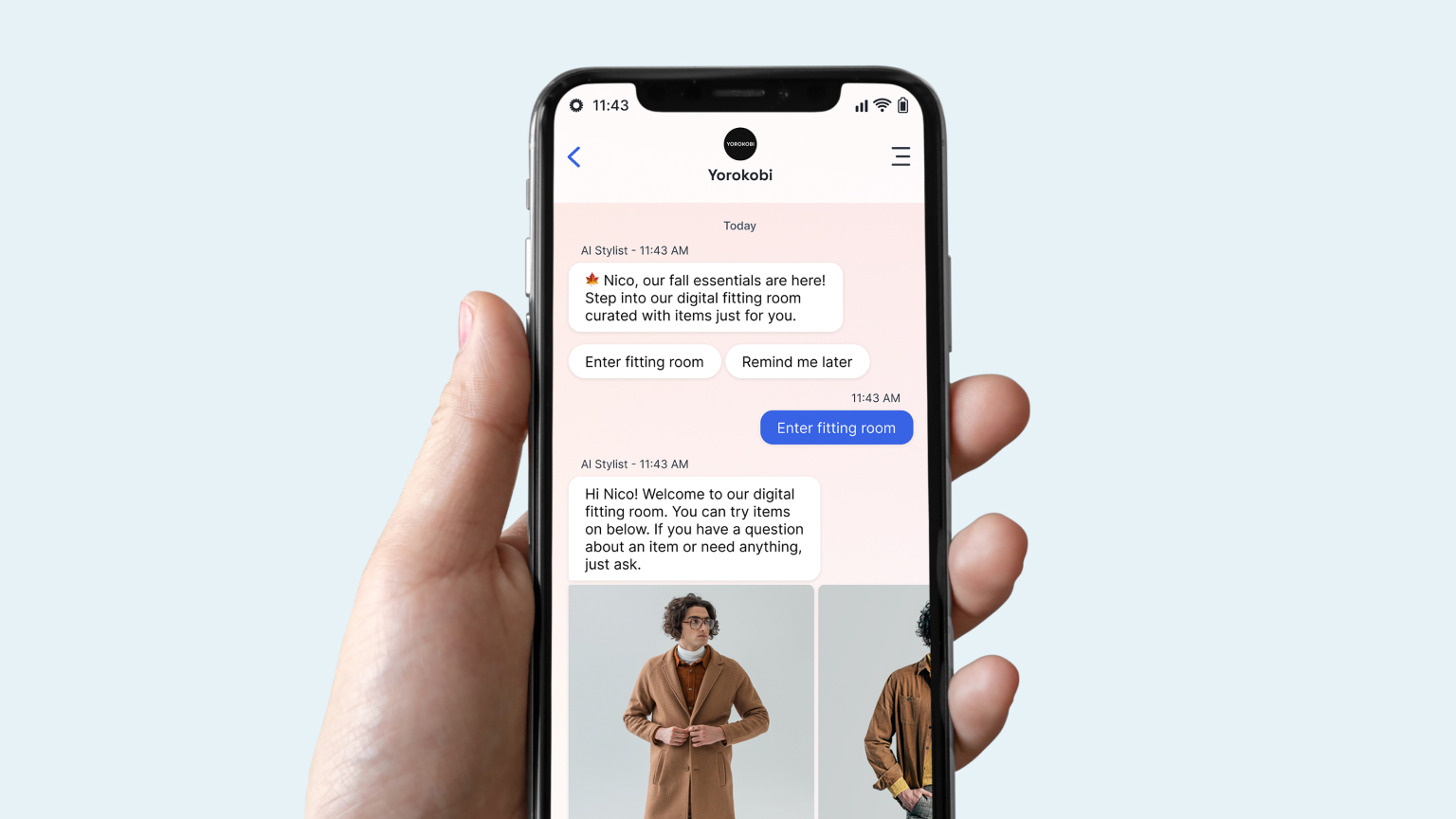
Traditionally, Artificial Intelligence (AI) success has been defined by this quote:
“A computer would deserve to be called intelligent if it could deceive a human into believing that it was human.”
~ Alan Turing, 1st chatbot creator
At LivePerson, we believe that deception is not a good quality. Instead we focus on AI that is inspiring, informative, accurate, and engaging…a far higher north star than Turing’s definition of intelligent.
For those of us who work in tech, Conversational Artificial Intelligence (AI) is proof of scientists’ and engineers’ revolutionary strides in improving online communication with an organization. For everyone else, will understanding the what’s and the why’s of Conversational AI better their daily lives, too? Absolutely. Follow along, as we take a journey down the path of artificial intelligent messaging.
First, some current insights on Conversational AI and customer expectations
- 77% percent of customers say chatbots will transform their expectations of companies in the next five years. (Salesforce)
- A virtual assistant can help organizations reduce call, chat, and email inquiries by up to 70 percent. (Gartner)
- We found that the majority (60%) of customers prefer chatbots over human agents for addressing account balances, followed by the need to update addresses online due to speed, accuracy, and convenience. (LivePerson)
Let’s dive into a deeper understanding: What is Conversational AI and how does it work
Conversational AI is a set of technologies that power human-like interactions through automated messaging and voice-enabled applications. Conversational AI brings together eight technology components:
- Natural Language Processing (NLP): the ability to read or parse human language text
- Intent Recognition: ability to understand what the customer is requesting, even if phrased unexpectedly
- Entity Recognition: understanding that some text refers to informative abstract categories, such as dates.
- Fulfillment: the ability to pull data from web services or databases using APIs, run conditions, and inform the Dialog Manager
- Voice Optimized Responses: ability to converse in a human-like manner and show emotions to deliver an optimized experience
- Dynamic Text-to-Speech: converts written text to natural sounding human speech, supporting various languages, voices, and accents
- Machine-Learning Models: learn how to better respond to the user by analyzing human agent responses
- Contextual Awareness: ability to follow conversation history, translate, recall, and memorize information over conversations
Why Conversational AI solutions can benefit all involved
If a Conversational AI exchange can provide its user with the inspiring, accurate, and helpful context they are seeking on the go, then that’s a positive quality we can all benefit from.
Imagine a world where the brands we do business with know us, and use that knowledge to give us an exceptional customer experience. With Conversational AI, brands can provide personalized and differentiated customer service interactions that build relationships. Each interaction can feel like a 1:1 conversation that is context-aware and informed by past interactions.
This means better user experiences (UX) for consumers and more streamlined processes with positive outcomes like higher Customer Satisfaction Score (CSAT), Net Promoter Score (NPS), and Return on Investment (ROI) for businesses.
And as digital use increases, we — both as consumers and as brand leaders — have the opportunity to join in, build better Conversational AI tools and models for our collective gain, and advance a more Curiously Human™ AI platform for the betterment of all.
Now, let’s back up — where did Conversational AI begin?
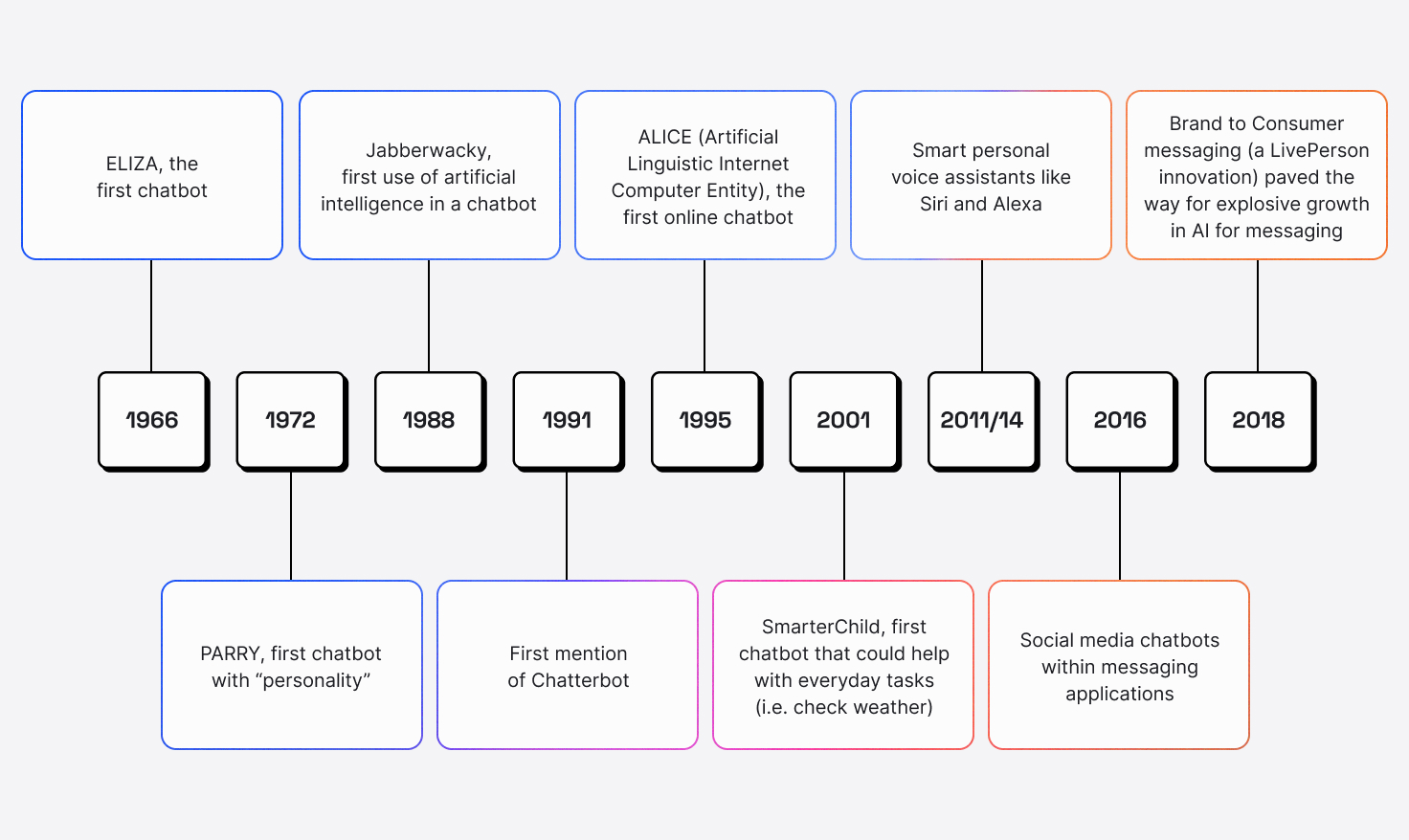
We can think about the evolution of Conversational AI on a timeline, starting with the construction of ELIZA, the first chatbot, in 1966, based on the Turing Test (Science Direct).
- 1966: ELIZA, the first chatbot
- 1972: PARRY, first chatbot with “personality”
- 1988: Jabberwacky, first use of AI in a chatbot
- 1991: First mention of Chatterbot
- 1995: ALICE (Artificial Linguistic Internet Computer Entity), the first online chatbot
- 2001: SmarterChild, first chatbot that could help with everyday tasks (i.e. check weather)
- 2011/2014: Smart personal voice assistants like Siri and Alexa
- 2016: Social media chatbots within messaging applications
- 2018: Brand to Consumer messaging (a LivePerson innovation) paved the way for explosive growth in AI for messaging
The way Conversational AI chatbots nowadays engage in a discussion is entirely different from their predecessor, ELIZA. They can share personal thoughts and family drama events, be relevant but also confusing, use appropriate emojis, and joke just as humans do. They can provide a “Curiously Human” experience, which can delight users.
What does the future of Conversational AI look like?
Conversational AI is on a trajectory to dramatically improve a brand’s operational efficiency, quality of service, and customer experience across an entire ecosystem. The time-consuming, repetitive tasks for customer service leaders (from resolving issues to scheduling meetings to accessing applications and knowledge databases, etc.) can’t be conducted at scale by live human agents. However, virtual assistants (chatbots) can perform all of these tasks more efficiently, adding immediate value to the customer experience while reducing operational costs.
Another item to look forward to is more consistent and personalized messaging. After all, bots are capable of holding human-like conversations and remembering user preferences, past dialogues, context, and meaning to provide the appropriate response. Plus, consumers want to be offered consistent experiences wherever they connect with brands. That will drive expansion of Conversational AI applications and technology to support all channels, including voice, from within one platform. With greater quality messaging from brands, expect a steady increase in customer engagement across all digital platforms.
Finally, self-learning AI will drive the future of Conversational AI innovation. These machine-learning systems that study how humans interact, identify the best conversational flow for a specific intent, and craft that flow into an automation that can scale to support millions of customer service conversations, will revolutionize the way brands engage. AI that recognizes its mistakes, and learns by adapting in real time, will become the norm.
These quality Conversational AI interactions will make our digital lives more synchronized and less siloed. And that’s vital as virtual #WFH situations evolve and customers continue to seek conversational solutions for everyday needs and tasks.
Continuing to enhance the customer journey
In exploring the journey of Conversational AI, one thing is pretty clear: It was created to improve communication between users, it’s grown to help users with their daily functions, and it continues to evolve into a benefit for its users. Therefore, the fundamental purpose of Conversational AI has always been to better our lives within an increasingly unavoidable digital world. Want more? Get a Conversational AI demo here.


